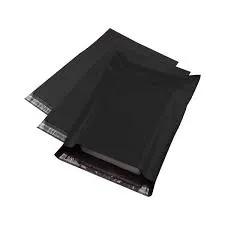Stretch Film with Ventilation Holes for Improved Breathability and Moisture Control
The Benefits and Applications of Stretch Film with Holes
In the world of packaging, stretch film has long been a reliable solution for securing and preserving products during transportation and storage. However, a newer innovation—stretch film with holes—has gained traction in recent years. This specialty film provides a multitude of benefits and serves various applications that enhance the efficiency of the packaging process and protect goods in transit.
What is Stretch Film with Holes?
Stretch film with holes, also known as perforated stretch film, is a type of stretch wrap that features small openings throughout the material. These perforations allow for air circulation, which is particularly advantageous for products that need to breathe, such as fresh produce and delicate items. Unlike traditional stretch film, which is designed to create a tight vacuum around the items it covers, perforated film balances protection with airflow, mitigating the risk of moisture buildup and spoilage.
Key Benefits
1. Enhanced Breathability The most significant advantage of using stretch film with holes is its ability to allow air exchange. This is crucial for perishable items like fruits, vegetables, and flowers. By preventing moisture accumulation, the film helps maintain the freshness and quality of the products throughout the supply chain.
2. Reduced Spoilage In the produce industry, maintaining the right level of humidity is essential. Stretch film with holes reduces the chances of condensation forming inside the packaging, which can lead to mold and spoilage. As a result, retailers and distributors can reduce waste and increase the shelf life of their products.
3. Cost-Effective Solution While the initial cost of perforated stretch film may be slightly higher than conventional stretch film, the potential savings on waste and spoilage can be significant. This makes it a cost-effective solution in the long run, especially for businesses dealing with perishable goods.
4. Versatile Applications Stretch film with holes is not limited to the agricultural sector. Its applications extend to various industries, including pharmaceuticals, textiles, and even automotive. Any products that require ventilation during shipping can benefit from this innovative packaging solution.
stretch film with holes

5. Environmentally Friendly Options Many manufacturers are now producing biodegradable or recyclable perforated stretch films. By opting for these materials, companies can reduce their environmental impact while still providing enhanced protection for their goods.
Applications in Various Industries
1. Agriculture In the agriculture sector, stretch film with holes is commonly used to wrap pallets of fruits and vegetables. By allowing gas exchange, the film helps to prolong the freshness of the products, making it ideal for transportation to grocery stores and markets.
2. Food Service Restaurants and caterers often use perforated stretch film to cover prepared foods. The breathable material helps maintain optimal temperature and humidity levels, ensuring that food stays fresh until it is served.
3. Pharmaceuticals In the pharmaceutical industry, the need for regulation and product integrity is paramount. Stretch film with holes can be used to wrap medicines and medical supplies, preventing moisture while ensuring proper air circulation.
4. Textiles When shipping textiles, protecting against mildew is crucial. Perforated stretch film provides a safeguard during transit, allowing fabric to breathe and preventing unintentional damage due to humidity.
Conclusion
As packaging technology continues to evolve, stretch film with holes has emerged as a vital tool for many industries. Its unique design facilitates air circulation, reducing spoilage and maintaining product integrity while still providing the necessary protection during transport. Businesses that embrace this innovative packaging solution can enhance their operational efficiency while offering better quality products to their customers. In a world where freshness and quality are paramount, stretch film with holes is quickly becoming the standard in effective packaging solutions.
-
The Best Uses for Small Trash Bags in Daily LifeNewsJul.01,2025
-
Stylish Reusable Grocery Bags TrendsNewsJul.01,2025
-
Shipping Advantages of Using Bubble Envelopes BulkNewsJul.01,2025
-
How Compostable Mailing Bags Reduce Environmental ImpactNewsJul.01,2025
-
Environmentally - Friendly Bulk Poly MailersNewsJul.01,2025
-
Eco Friendly Custom Laminated Tote BagsNewsJul.01,2025
-
Have the freedom of customizing your custom mailers any way you want! Our dedicated packaging support will help deliver you the mailing experience you need to elevate your shipping experience to the next level! Start making a strong impression on your customers and stand out from your competitors! -
LIYA uses high quality raw materials which directly purchased from large enterprises domestic and overseas such as PetroChina, Sinopec, Sabic, Equate, ExxonMobil, Dow Chemical, Total, and Borouge, ensuring the price advantage and quality of the raw materials. -
LIYA uses high quality raw materials which directly purchased from large enterprises domestic and overseas such as PetroChina, Sinopec, Sabic, Equate, ExxonMobil, Dow Chemical, Total, and Borouge, ensuring the price advantage and quality of the raw materials.





